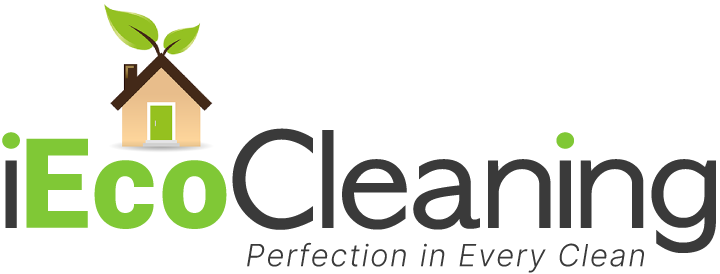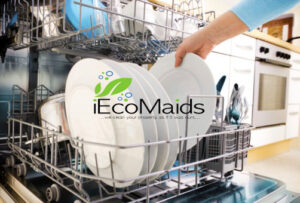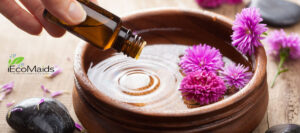
By Alison Wilkinson
As anyone who’s been in the elevator next to a compulsive cougher knows, offices are full of germs. But the good news is that you can do your part to reduce the spread of germs and keep yourself and others from getting sick. In this article, you’ll find an office cleaning checklist to ensure your office—whether at home or in a corporate building—is clean and disinfected.
Aren’t Cleaning and Disinfecting the Same Thing?
Not quite. According to the Centers for Disease Control, cleaning is the removal of dirt and impurities—which includes germs—from surfaces. Cleaning removes some germs but doesn’t kill them. For instance, if you clean a dirty table with warm, soapy water, it will no longer look dirty. You’ll remove some germs, but many will remain behind.
In contrast, disinfecting uses chemicals to kill germs on surfaces, but doesn’t necessarily clean dirty surfaces. For instance, if you spray disinfectant spray on a table after your child plays with playdough, the playdough will remain unless you clean it off.
If you only clean or only disinfect, you do half the job. To effectively clean an office and rid surfaces of germs, you must first clean and then disinfect.
When choosing chemicals for disinfection, keep in mind the difference between a general disinfectant, an antiseptic, an antibacterial product, and a sanitizer. Unlike a disinfectant, which works on surfaces, you apply an antiseptic to bodily tissues. If you’ve seen a doctor apply an orange-tinted liquid to their arms and hands before surgery, you’ve seen an antiseptic in action. An antibacterial product, as the name implies, kills bacteria. But an antibacterial product does not necessarily kill viruses, such as influenza or COVID-19. Finally, a sanitizer reduces the number of bacteria, viruses, and other germs on surfaces, but does not kill as many as a disinfectant. While reducing the number of germs is helpful in that it lowers the total exposure to a virus, sanitizers are not as effective as disinfectants. For a full-powered attack on viruses, such as COVID-19 or cold and flu viruses, you need a disinfectant.

Which Disinfectant Should I Use?
Several disinfectants kill germs effectively. Check the EPA registration number of the product to ensure the cleaning product you prefer is effective against the germs you need to target. These are some of the most common disinfectants.
- Alcohol
Many cleaning products, such as disinfecting wipes, are alcohol-based. Alcohol-based products can kill viruses, bacteria, and fungi and generally do not stain or corrode surfaces they’re applied to, including screens. Alcohol works quickly, killing some viruses in as little as 30 seconds.
However, alcohol-based cleaning products are slow-acting against nonenveloped viruses, such as norovirus. (Good news: COVID-19 and influenza viruses are enveloped.) These products also have no detergent or cleaning properties. And while alcohol is safe on most surfaces, it’s drying. If you use alcohol-based cleaning products on rubber surfaces (such as some staplers or other office supplies), repeated use can harden or crack the surfaces.
- Bleach
Bleach is a highly effective disinfectant. It kills viruses, bacteria, and fungi. It’s also one of the cheapest cleaning options. You only need 5 tablespoons of bleach per gallon of water. (But be sure to use all the bleach mixture you make. It degrades quickly and isn’t as effective against germs after 24 hours of mixing.) While it’s not as fast-acting as alcohol, it kills some viruses in about five minutes.
When using bleach, make sure to be in a well-ventilated area, as the fumes it gives off can be toxic. If you start to feel queasy or lightheaded, take a break. If your symptoms are severe, call Poison Control at 1-800-222-1222.
Bleach is also dangerous when mixed with any solution other than water, and especially when it’s mixed with ammonia. (Read more on that below.)
- Ammonia
Ammonia, found in products such as window cleaner, evaporates quickly, making it a great cleaning product for streak-free dirt removal. It’s a commonly-used disinfectant for certain bacteria, such as E. Coli, but it is not as effective against viruses. A high-impact ammonia concentrate, known as quaternary ammonium compound (QAC) is effective against viruses, but it’s usually only sold for industrial use, for instance, in hospitals or restaurants.
- Hydrogen peroxide
Hydrogen peroxide is effective against numerous microorganisms, including bacteria, fungi, and viruses. It’s non-toxic and it works on a wide variety of surfaces. It typically kills viruses in less than 10 minutes.
Be cautious, though, when spraying hydrogen peroxide on marble or granite. Because it’s acidic, it can break down finishes with extensive use. Plus, bleaching agents in the product can cause discoloration of some surfaces. If cleaning a colored surface, test the product on a discrete area before use.

Safety first
As mentioned above, you should never mix chemicals. Only mix chlorine bleach, which is sometimes listed as sodium hypochlorite on labels, with water. The same is true of ammonia. When you mix chlorine and ammonia, they create a gas called chloramine, which can cause severe breathing problems that can be fatal. Hydrogen peroxide and vinegar produce a corrosive acid, which can irritate the eyes, skin, and respiratory system.
As a rule of thumb, never mix a chemical with any other substance. Be sure to check the ingredients to see which chemicals you’re using. If you need to dilute one, stick to water.
While looking at the label, be sure to check and carefully follow the safety instructions. Consistent with CDC guidelines, many products recommend that you work in a well-ventilated room. Open windows or doors, if possible.
Many cleaning products contain harsh chemicals. Wear gloves while cleaning to avoid skin irritation. If there’s any danger of chemicals splashing, wear eye protection.
Finally, while disinfectant spray works great on surfaces, it should not be used on humans, and it’s not edible. Don’t spray it on yourself or others, or on food.
Your Office Cleaning Checklist
Once you’ve decided what type of disinfectant best suits your purposes, it’s time to clean your office. Follow these steps.
- Ventilate the space.
If you know someone has been sick in your office with a respiratory illness, such as COVID-19, close off the area, open the windows, and use ventilating fans. The increased air circulation will help remove the infectious respiratory droplets. If possible, wait 24 hours after the ill person has been in the room before cleaning.
- Clean then disinfect surfaces.
The CDC recommends that you clean first with soap and water, and then follow with disinfectant. Washing with soap and water creates a surface that you can disinfect. If you attempt to disinfect an unclean surface, the disinfectant will consume the dirt and oil before it can kill the germs. When you disinfect a clean surface, the disinfectant can kill the germs as intended.

- Watch the time.
Disinfectants work at different speeds to attack germs. As noted above, alcohol is the fastest-working germ killer, killing some viruses in as few as 30 seconds. For high-traffic items, such as the stapler, an alcohol-based disinfectant works best. For areas not touched as frequently, such as the floor, a bleach- or hydrogen peroxide-based disinfectant would work well.
- Clean from top to bottom.
To avoid recleaning areas you’ve already cleaned, start at the top and work your way down. If you clean and disinfect the tables and then clean the ceiling fan, the dust on the fan will land on your newly polished surfaces.
Similarly, save vacuuming and washing floors for last, so you can clean the dust and debris that’s landed on the floor as you’ve cleaned.
Speaking of vacuuming and floor washing, don’t forget to move the furniture when you clean the floors. If you vacuum or mop around the furniture, you’ll leave behind hidden areas of dust, grime, and germs.
- Pay attention to high-touch surfaces.
All offices have hot spots that receive more contact than others. Your keyboard, phone, and mouse are obvious areas that gather germs. But you may not think of other areas, such as light switches, doorknobs, toilet flushers, the sides of desks, conference room tables, and community fridge handles.
Wipe down and disinfect community office supplies such as staplers or tape dispensers. Be sure to pick up office supplies and clean the sides and bottoms. Disinfecting the top won’t get all the germs.
Keep It Clean
Now that your office is clean, keep it that way! Encourage everyone in your office to wash their hands frequently and thoroughly, especially after they use the bathroom, before they eat, and after they touch shared office equipment. By keeping your workspace and your hands tidy, you’ll help keep yourself and your colleagues healthy.




